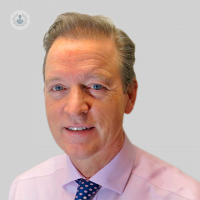What are the main goals of breast reconstruction surgery?
Written in association with:In this article below, Mr Brendan Smith, a prominent oncoplastic breast surgeon and expert in breast cancer surgeries and reconstructions, provides valuable insights into the different types of breast reconstruction, their advantages, drawbacks, and surgical procedures.

In what scenarios should breast reconstruction surgery be considered?
Breast reconstruction is an essential consideration for women who have undergone or are preparing for a mastectomy, either immediate or delayed, as part of breast cancer treatment. It is also an option for women at a high risk of breast cancer due to genetic factors. While most mastectomy patients are eligible for reconstruction, not all choose this path due to personal reasons.
The decision to pursue breast reconstruction is deeply personal, and there is no definitive right or wrong choice. It involves a thorough discussion with your surgeon and breast care nurse to address any concerns and questions.
What are the main goals of breast reconstruction surgery?
The main goals of breast reconstruction surgery are as follows:
- Restoring breast symmetry when wearing a bra.
- Recreating breast contour.
- Avoiding the need for external breast prosthetics.
- Achieving a natural appearance both in clothing and without.
- Restoring self-confidence, femininity, attractiveness, and sexuality.
There are also various different limitations of breast reconstruction surgery. These include:
- Exact replication of the natural breast is not always achievable due to various factors.
- Sensitivity is usually absent in the reconstructed breast.
- Multiple surgeries may be necessary for optimal results.
- Differences between reconstructed and natural breasts may be noticeable when nude.
What are the different types of breast reconstruction surgery available?
Types of breast reconstruction surgery include:
- Silicone Implants in pre-pectoral or sub-pectoral positions.
- DIEP (or TRAM) abdominal flap reconstruction.
- Latissimus dorsi (LD) muscle back flap reconstruction.
What are the main factors that influence what type of breast reconstruction is performed?
There are several factors that influence the decision as to what type of breast reconstruction should be performed on a patient. The main ones are as follows:
- Overall health, breast cancer type, and breast size.
- Amount of available tissue for reconstruction.
- Desire for breast symmetry with the opposite breast.
If you’re interested in scheduling in an appointment with Mr Brendan Smith, simply head on over to his Top Doctors profile today.


